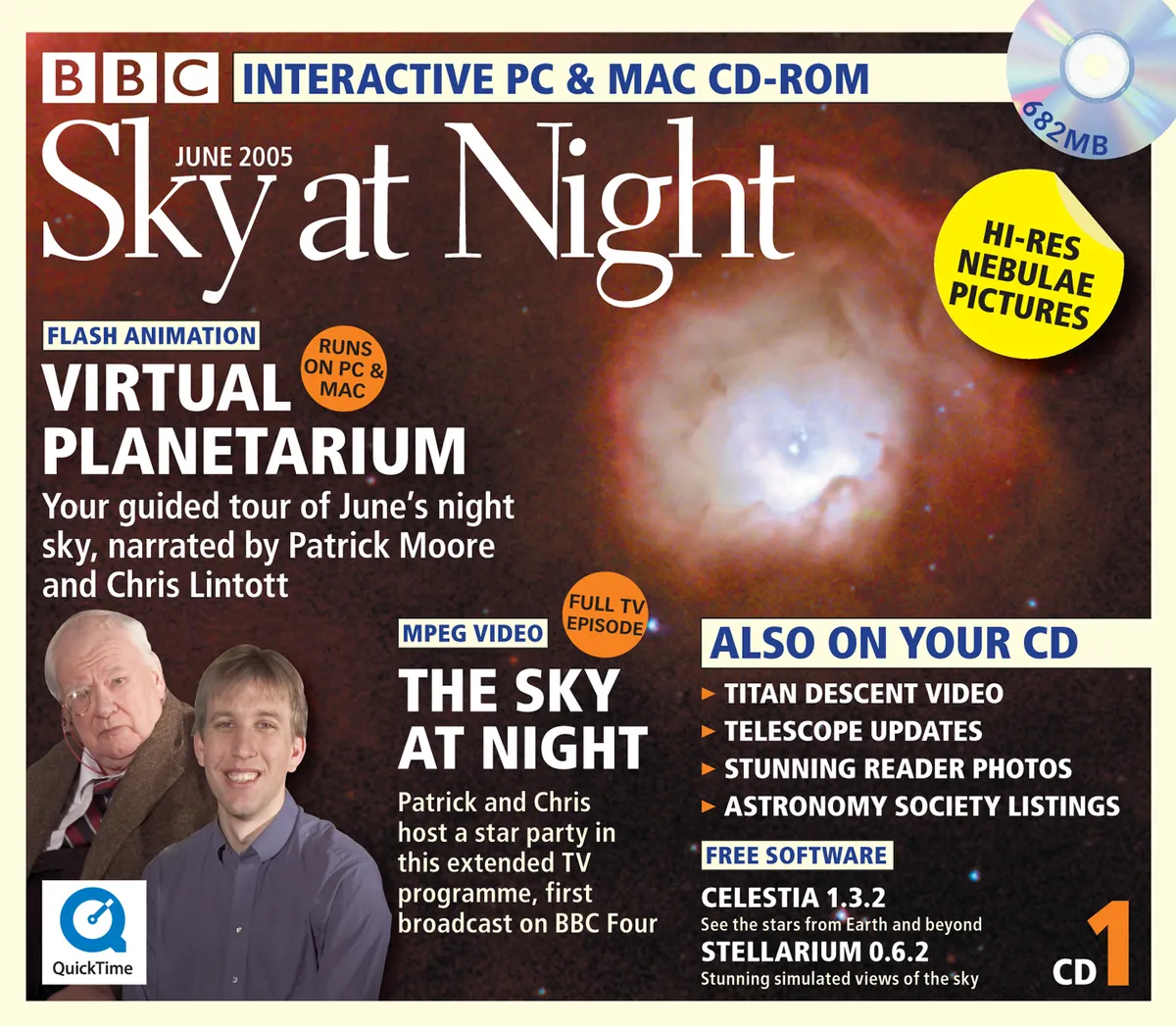This year we celebrate the 15th anniversary of the Virtual Planetarium, our audio-visual guide to the night sky. It’s been an integral part of BBC Sky at Night Magazine since it launched, the very first Virtual Planetarium appearing with issue #001 of magazine, in June 2005.
Now, 15 years later, the finishing touches have been put to our 185th Virtual Planetarium, covering what’s in the night sky in August 2020. In all the years in between, there hasn’t been a month without a Virtual Planetarium.
Back in 2005, the idea was the same as it is today: a narrated guide to the best things to see in the night sky each month, accompanied by visuals that would help viewers find these great sights among the stars.

In its early days, the Virtual Planetarium was voiced by none other than Sir Patrick Moore. Before he departed for the Great Observatory in the Sky in 2011, Patrick’s instantly recognisable tones would enthuse viewers with the best conjunctions, planets and deep-sky objects to view each month.
Joining him to talk through what to observe each month was Chris Lintott, his co-presenter on The Sky at Night, their on-screen rapport from the BBC TV programme coming through just as much on the Virtual Planetarium.
“In those days we recorded episodes of the TV programme at Patrick’s home in Selsey, turning his book-lined study into a temporary studio each month,” recalls Chris. “When we’d finished filming for the TV programme, the cameras kept rolling and we recorded the voiceover for the Virtual Planetarium.”
As Chris became involved in other projects over the years, such as Zooniverse, the citizen science portal that he helped set up, the team of Virtual Planetarium narrators grew to include Pete Lawrence, also a presenter on The Sky at Night.
And when Patrick narrated his final Virtual Planetarium in 2011, another member of The Sky at Night presenting team, Paul Abel, came on board.
Pete and Paul continue to narrate the Virtual Planetarium today, giving today’s Virtual Planetarium an unbroken link back to one of the greatest names in science communication.
The idea for the Virtual Planetarium’s audio has remained unchanged since 2005: each month’s instalment is around 20 minutes long, and features two experienced amateur astronomers discussing the planets, deep-sky objects, constellations and special events (eg meteor showers) visible in the night sky that month.
“When each episode is created, this is where we start,” says Pete Lawrence. “We begin by writing a bullet point script that will cover what’s best in the night sky that month. Paul and I will then divide up the objects to decide who will lead the conversation on each.”
The video side of the Virtual Planetarium, however, has seen much change over the past 15 years, driven by changes to video production software and the way we all consume media. When it first began, the Virtual Planetarium was an animation created in Flash, which readers of the magazine could watch from a CD-ROM.
“The presentation centred around the concept of the all-sky chart that’s in the centre spread of the magazine each month,” continues the Virtual Planetarium’s developer, Adam Crute.
“As Flash became increasingly obsolete and we were moving to online delivery, we changed production techniques so that the VP was delivered as a standard video file. We retained the sky chart visual concept.”
Then, in 2014, Adam began working on the idea of using visuals from planetarium software to create a more engaging, photo-realistic Virtual Planetarium.
Magazine Editor Chris Bramley takes up the story: “We tried a number of different apps to see if we could create the visuals using them, and I approached a number of software companies with the idea of working together. Ultimately we settled on the freely available Stellarium because it had a scripting interface which Adam found most useful.”
“Stellarium is a really functional desktop planetarium that produces attractive imagery, has a powerful scripting engine, and is open-source,” says Adam. “It is used in public and private planetaria across the world, as well as on countless desktops.”
It’s the scripting engine that allowed Adam to develop the Virtual Planetarium into its latest version, which you see on BBC Sky at Night Magazine's YouTube channel today.
“Once the voiceover has been edited and prepared to optimise sound quality and clarity, I add cue points, which are then imported into a custom app that allows scenes and transitions to be defined,” he begins.
“The resulting data is then imported into Stellarium, where custom scripts work through the scene and transition data, outputting still frames for static scenes, and frame-by-frame images for movements and transitions. Doing this allows us to create a higher quality visual output than one gets from live screen capturing, and lets us include custom graphical elements too.
“For example, the scripts output point-of-view information which is visible at the bottom of the VP screen, and create motion tracking targets for use during compositing. These various outputs are imported into advanced compositing software, in which the components are reassembled and synced to the voiceover.
“Various other layers are then added – labels, markings, pointers, and other graphical overlays – to enhance the immersiveness of the Virtual Planetarium, before the final version is exported into a finished video that is uploaded to YouTube.”
So as you watch the latest Virtual Planetarium in its 15th year of publication, you'll have an accurate picture of its history before coming to YouTube in February 2020, and the amount of behind-the-scenes work that has gone into producing it since 2005.